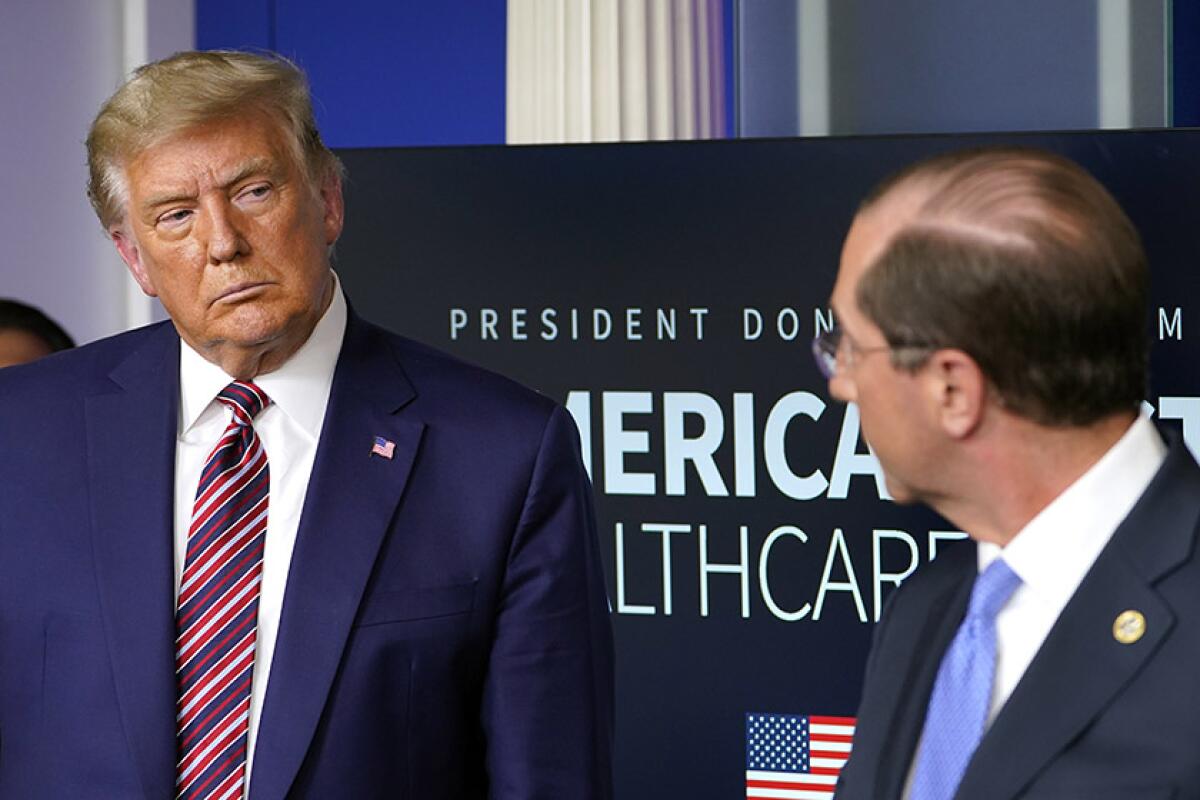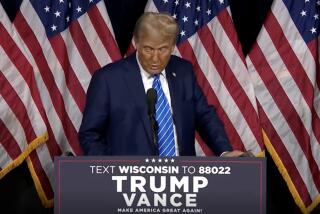Editorial: Our ‘America First’ president outsourced drug price regulation to other nations

President Trump has largely been a corrosive force on healthcare issues, working to undermine the Affordable Care Act and advancing policies that favored younger, healthier people at the expense of Americans with preexisting conditions. But on prescription drugs — an area largely overlooked by the ACA — he’s aligned himself with the millions of consumers deeply concerned about the cost of new or specialty drugs.
The Trump administration responded to that concern in its most concrete way yet on Friday, announcing a pair of controversial steps that could ultimately save money for taxpayers and many consumers.
The two rules released by the Department of Health and Human Services are designed to make at least some prescription drugs more affordable. The more dramatic of the two will cut the amount the government pays doctors for 50 popular medications in Medicare Part B (which covers infusions or injections typically done in a doctor’s office or outpatient clinic) by tying those to the lowest price paid by any of the other major developed countries in the Organization for Economic Cooperation and Development.
Today, healthcare providers buy those drugs from the manufacturers — which may be the sole source of that treatment — and then are reimbursed by the government according to the average sale price of that medication, plus a small percentage. The system encourages doctors to use less expensive generic drugs, but when there’s no generic available, it creates a perverse incentive to use the most expensive treatment that’s appropriate. And because providers have little bargaining power, the price of Part B drugs has gone up far faster than inflation and the price of drugs in other Medicare programs, according to HHS.
The new rule will no longer pay doctors a percentage of the price for those 50 drugs, substituting a flat fee for administering the medication. That’s a smart change that eliminates the perverse incentive in the current system.
But using a foreign government’s price as a benchmark for reimbursements is a cop-out on two levels.
First, it gives up on the idea of trying to negotiate prices with drugmakers; instead, it simply pays doctors less for the drugs they buy. The Trump administration had actually sought to avoid that problem in its initial version of the rule, which would have empowered HHS to contract with large, private drug-buying ventures that could negotiate on behalf of doctors. But that provision was dropped from the interim final rule announced Friday.
And second, it blindly adopts other countries’ priorities when it comes to drug pricing, rather than having the U.S. government try to determine a treatment’s value and then either negotiate for that price or just insist on it. Trump rightly complains that other countries are “free riding” because drugmakers count on profits in the United States to fund their costly research and marketing efforts. But the sort of price caps employed overseas risk cutting off the revenue needed to develop life-saving — and ultimately money-saving — drugs in the future.
The other new rule addresses a problem that affects millions of Americans with private insurance, although the potential savings aren’t as clear. It bars drug companies from paying kickback-like rebates to a key middleman in the prescription-drug industry: pharmacy benefit managers such as Express Scripts and CVS Health, which health insurance companies hire to negotiate discounts with pharmaceutical companies.
Actually, that’s what PBMs did in the early days. But the market has consolidated around three giant PBMs, each of which is owned by (or owns, in the case of CVS Health) health insurers. They use their formidable clout to negotiate lower prices, but those discounts don’t flow directly to consumers. Instead, the PBMs collect rebates from drugmakers based on a drug’s list price and sales volume, them pass along a percentage to their insurance company customers. The higher the list price, the more profits for the PBMs — another perverse incentive driving up costs for consumers.
The administration’s ban seeks to shift the industry to discounts that will be applied to the price consumers pay their pharmacist, a move HHS says will cut drug prices by 30%. But studies commissioned by HHS have shown that ending rebates will also raise premiums, which are reduced now by the rebates PBMs share with insurers. As a consequence, the ban on rebates could benefit people who spend heavily on prescription drugs at the expense of people who don’t need many pharmaceuticals, one of the studies projected.
Regardless, the PBM system is too opaque and biased in favor of spending, not saving, on prescription drugs, which means it cries out for reform. And even with a ban on rebates, lawmakers should look for ways to create the sort of complete transparency that could guide future rules.
At least the Trump administration is trying to cut the cost of healthcare. The actions weren’t nearly as bold as they could have been, as our “America First” president outsourced the task of regulating drug prices to other industrialized nations. But they move the system a notable step in the right direction, while also highlighting the tradeoffs involved in going further.
More to Read
A cure for the common opinion
Get thought-provoking perspectives with our weekly newsletter.
You may occasionally receive promotional content from the Los Angeles Times.










